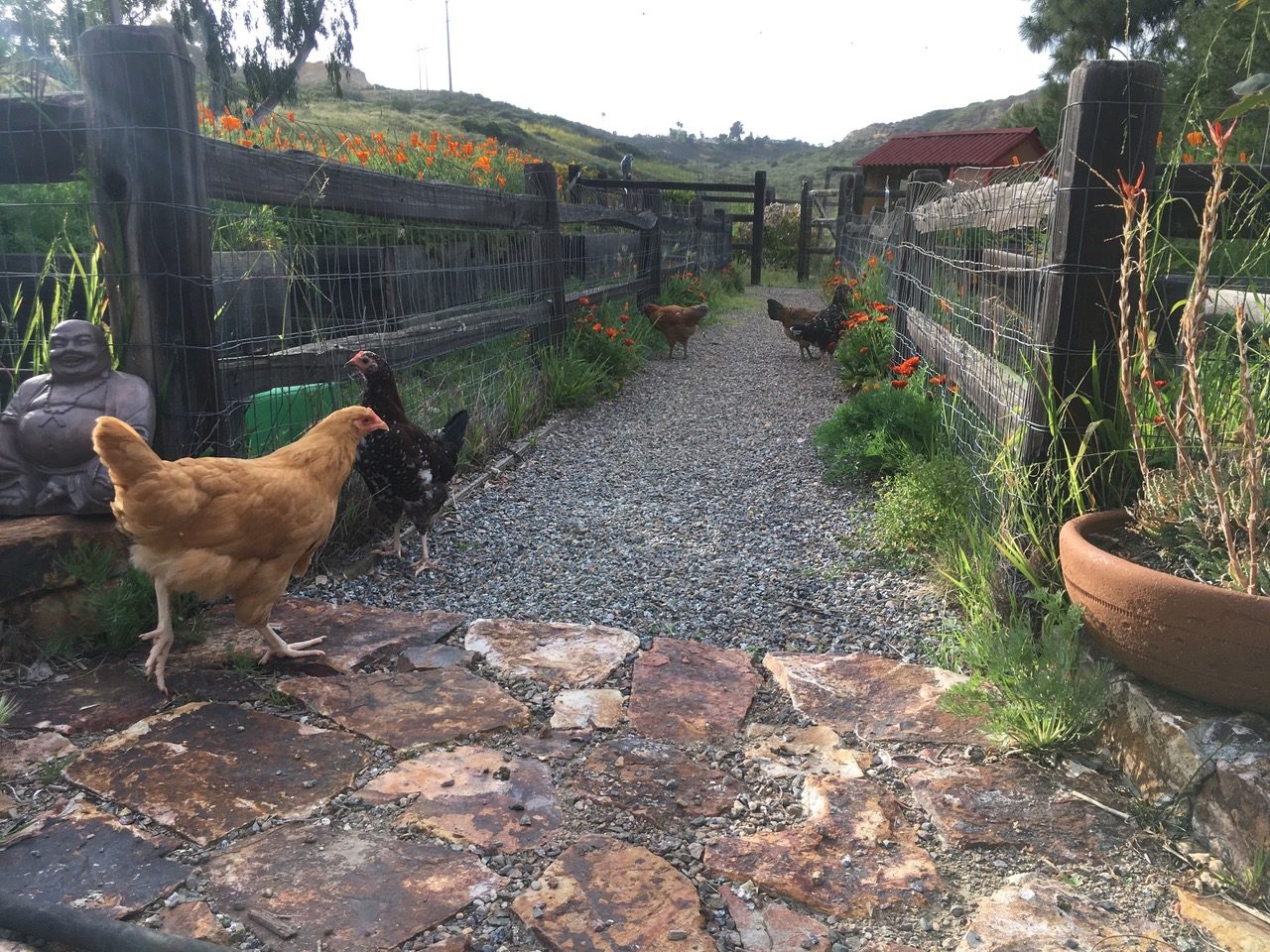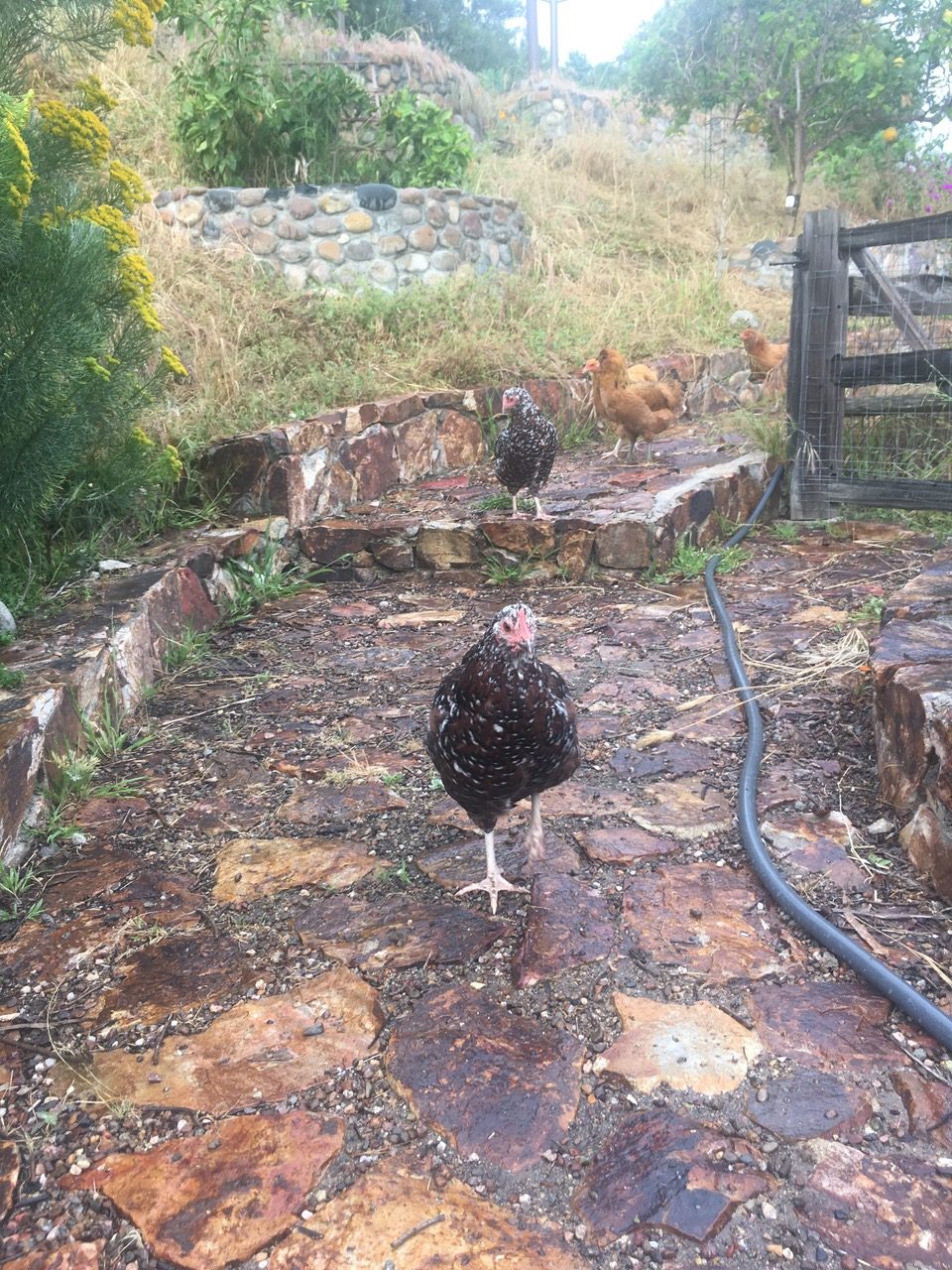In matters afield we aim to minimize wastes, while also growing foods, preventing coastal pollution & improving efficiency broadly, including i.e. in materials and water-use. For instance we find it efficient (and tasty) to grow vegetables and fruits in an area previously covered by water-guzzling, nonproductive grass lawns. Organic wastes are composted. Free-ranging chickens lay tasty eggs for more protein. This all helps to ‘Squeeze the oil’ out of our plates, all on clean solar power.
Instead we now produce abundance. For instance in a sample June we’ll have basils, beans, blackberries, blueberries, carrots, cantaloupe, corn, cucumbers, habaneros, kale, lettuce, lime beans, mustard greens, peas, savory, spinach, strawberries, tomatoes, watermelons etc. With fruit trees too there’s figs, guava, jujube, lemons, limes, mulberries, peaches, pears, plums, and sapote. As Seasons change, what’s grown here changes as well yet it’s always enjoyable & all organic. Efficiency improvements once started are amply rewarded, and often don’t end at shores of energy alone.
The vegetable garden is 45 feet by 44 feet, just under 2,000 sq. ft. or about a footprint of regular-sized home yet provides overflowing amounts of food. There’s also a composting area taking in unwanted organic wastes and providing good new soil; plus a chicken yard to input the unwanted greens, etc and we get out both companionship and fresh eggs that delight. Gardens are on micro-irrigation and in sum are much more productive than what was previously just water-guzzling grass-only monoculture.

‘Solar’ box:
Basils, Balm of Gilead, Onions
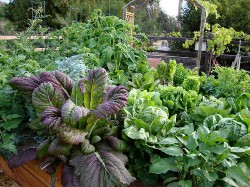
‘Efficiency’ box:
Arugula, Kale, Lettuce, Mustard. Peppers (many types), Wild Strawberry, etc.

‘Wind’ box:
Dry Beans
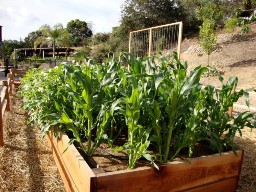
‘Geothermal’ box:
Sweet Corn, Potatoes
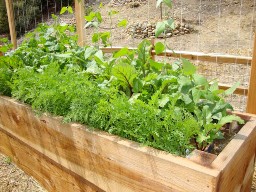
‘Microhydro’:
Beets, Carrots, Cucumbers
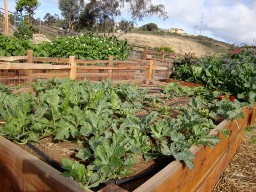
‘Conservation’ box:
Cantaloupe, Watermelons.
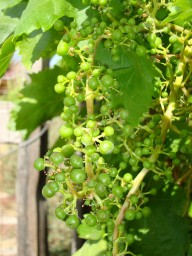
Table Grapes

Compost Area
Recycling waste into input.

